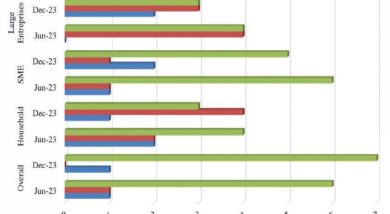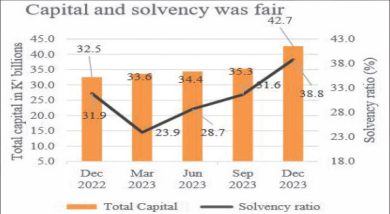Inflation climbs to 25.5 percent
 Malawi’s year-on-year headline inflation for August 2012 quickened by 3.8 percentage points to 25.5 percent from 21.7 percent the month before, according to the National Statistical Office (NSO).
Malawi’s year-on-year headline inflation for August 2012 quickened by 3.8 percentage points to 25.5 percent from 21.7 percent the month before, according to the National Statistical Office (NSO).
The rise points to continued erosion in purchasing power by average Malawians as both disposable income and savings are drastically reduced as the cost of living surges.
A 25.5 percent inflation rate is one of the highest Malawi has registered in the last decade and should be a nuisance to local monetary authorities who are keeping their fingers crossed to contain an average annual inflation of 18.4 percent announced by Minister of Finance Dr. Ken Lipenga in the 2012/13 budget.
 “The year-on-year headline inflation for August 2012 stands at 25.5 percent, an increase of 3.8 percentage points on the month before. The urban and rural rates are 28.2 percent and 23.8 percent, respectively,†reads a monthly inflation update from NSO posted on its website at the weekend.
The inflation rise signals that consumers should brace for tough times ahead as prices for basic goods and services contained in the country’s Consumer Price Index (CPI) are likely to speed up as importers pass on increased costs of their imported goods and services in the country due to the continued depreciation of the local currency against major trading currencies.
Already, fuel prices have just been revised upwards, a development likely to exert inflationary pressure.
The continued rise in the headline inflation rate as reported by NSO comes barely a few days after Nico Asset Managers, an investment management and advisory firm, has forecast that inflation will continue to rise in 2012 as a result of the liberalisation of the exchange-rate regime, which it said has raised the price of the US dollar by about 70 percent and has fuelled imported inflation.
The statistical body has also said during August, food inflation went up by 26 percent compared 2.4 percent recorded during the same period last month.
“Core inflation has gone up by 25.1 percent compared to 12.4 percent during the same period last year,†says NSO.
Core inflation is also another measure of inflation which excludes certain items that face volatile price movements, notably food and energy.
Reserve Bank of Malawi (RBM), whose main role includes ensuring price stability in the economy, is also conscious about souring inflationary pressures in the country.
RBM spokesperson Ralph Tseka said in an interview last Tuesday that in the wake of increased pressure from prevailing domestic price surge, the central bank is currently pursuing tight monetary policy.
“After we floated the currency, prices started going up. But we are still pursuing tight monetary policy,†he said.
And during an Economic Recovery Plan (ERP) news conference in Lilongwe last week, principal secretary in the Ministry of Economic Planning and Development Ted Sitimawina also observed that rising inflation rate is one of the threats and setback to the quick stability of the ailing economy.
He said government expects the economy to fully recover within12 to 18 months beginning April this year, but depending on other assumptions.
He said when the kwacha was devalued by 49 percent to a dollar and then floated, headline inflation rate rose from around 17 percent to 20 percent which, he said, was contrary to the assumptions underpinning the recovery plan.
Some of the basic food and non-food items whose prices have recently sky-rocketed include rentals, school fees, utility bills and basic food items such as maize, fish, beans, sugar, cooking oil, salt and vegetables.




